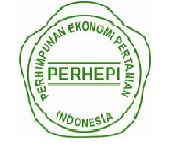Transformasi Kulit Singkong Menjadi Nata de Cassava dan Biostarter Kompos di Kecamatan Jatipuro Karanganyar
Abstract
Transformation of Cassava Peel into Nata de Cassava and Compost Biostarter in Jatipuro District Karanganyar. The Women Farmer Group (WFG) of Tani Waras V in Jatisobo Village and WFG Makmur in Jatimulyo Village of Jatipuro District have taken advantage of the abundance of cassava by processing it into rengginang and mocaf. The peel of cassava which reaches 10% of the wet weight of the cassava is the main waste in these productions. The purpose of this community service activity was to transfer the technology innovation to turn the cassava peel into "nata de cassava" and "compost biostarter" to the 2 WFGs. The service activity consisted of 2 phases. Phase I was the formulation of nata de cassava recipes, isolation of decomposer microbes from cassava peel for biostarter compost, and preparation of materials to be demonstrated to WFGs. Phase II was carried out with partners (1) delivering principal knowledge and technology, demonstrating the procedure of making nata de cassava and preparing compost biostarter (2) harvesting nata and isolates of decomposer microbes, and (3) application of compost biostarter. The evaluation results showed that the WFG members were very enthusiastic, as indicated by 90-95% of the members actively participated in all activities. They had performed the whole procedure of making nata (100%), moreover they were able to develop various recipes including using other waste materials with a success rate of 90-95%. The economic profit per recipe for nata fermentation media was estimated at Rp 51,500. Participants in the service activity also deepened their understanding and ability in the propagation of compost biostarter to produce healthy organic fertilizers.
Keywords
Full Text:
PDF (Bahasa Indonesia)References
Akanbi, W. B., Adebooye, C. O., Togun, A. O., Ogunrinde, J. O., & Adeyeye, S. A. (2007). Growth, herbage, and seed yield and quality of Telfairia occidentalis as influenced by cassava peel compost and mineral fertilizer. World Journal of Agricultural Sciences, 3(4), 508–516.
Alfarisi, C. D., Yelmida, Zahrina, I., & Mutamima, A. (2021). Production of nata de cassava from tapioca starch wastewater using different natural sources of nitrogen. Jurnal Ilmiah Pertanian, 17(2), 93–100. https://doi.org/10.31849/jip.v17i2.6208
Anindyawati, T. (2010). Potensi selulase dalam mendegradasi lignoselulosa limbah pertanian untuk pupuk organik. Berita Selulosa, 45(2), 70–77.
BPS Kabupaten Karanganyar. (2018). Ubi Kayu 2015-2017. http://karanganyarkab.bps.go.id/linkTableDinamis/view/id/8
Cahyani, V. R., & Kimura, M. (2009). Succession and phylogenetic composition of microbial communities responsible for the composting process of rice straw. In J. C. Pereira & J. L. Bolin (Eds.), Composting: Processing, Materials and Approaches (pp. 69–112). Nova Science Publishers.
Cahyani, V. R., Matsuya, K., Asakawa, S., & Kimura, M. (2003). Succession and phylogenetic composition of bacterial communities responsible for the composting process of rice straw estimated by PCR-DGGE analysis. Soil Science and Plant Nutrition, 49(4), 619–630. https://doi.org/10.1080/00380768.2003.10410052
Cahyani, V. R., Matsuya, K., Asakawa, S., & Kimura, M. (2004a). Succession and phylogenetic profile of eukaryotic communities in the composting process of rice straw estimated by PCR-DGGE analysis. Biology and Fertility of Soils, 40, 334–344. https://doi.org/10.1007/s00374-004-0783-x
Cahyani, V. R., Matsuya, K., Asakawa, S., & Kimura, M. (2004b). Succession and phylogenetic profile of methanogenic archaeal communities during the composting process of rice straw estimated by pcr-dgge analysis. Soil Science and Plant Nutrition, 50(4), 555–563. https://doi.org/10.1080/00380768.2004.10408512
Cahyani, V. R., Watanabe, A., Matsuya, K., Asakawa, S., & Kimura, M. (2002). Succession of microbiota estimated by phospholipid fatty acid analysis and changes in organic constituents during the composting process of rice straw. Soil Science and Plant Nutrition, 48(5), 735–743. https://doi.org/10.1080/00380768.2002.10409264
Cardoso, A. P., Mirione, E., Ernesto, M., Massaza, F., Cliff, J., Rezaul Haque, M., & Bradbury, J. H. (2005). Processing of cassava roots to remove cyanogens. Journal of Food Composition and Analysis, 18(5), 451–460. https://doi.org/10.1016/j.jfca.2004.04.002
Mayasti, N. K. I., & Nugroho, D. A. (2013). Pemanfaatan ampas basah tapioka sebagai media fermentasi dalam pembuatan nata de cassava. Pangan, 22(4), 365–372.
Oboh, G. (2006). Nutrient enrichment of cassava peels using a mixed culture of Saccharomyces cerevisae and Lactobacillus spp solid media fermentation techniques. Electronic Journal of Biotechnology, 9(1), 46–49.
Panjaitan, E., Manalu, C. J., & Damanik, S. P. (2018). Effect of mycorrhizae and kirinyu (Chromolaena odorata L.) compost on the production of red onion in ultisol soil. IOP Conference Series: Earth and Environmental Science, 205(1). https://doi.org/10.1088/1755-1315/205/1/012017
Permatasari, A. S., Winaningsih, I., & Prasetiyo, J. A. (2019). Inovasi limbah cair singkong menjadi nata de cassava sebagai bisnis kuliner. Jurnal Pengabdian Kepada Masyarakat (Indonesian Journal of Community Engagement), 5(3), 398–415. https://doi.org/10.22146/jpkm.42397
Resimanuk, Y. H., Nizar, A., & Despita, R. (2018). Pemanfaatan limbah kulit singkong menjadi dendeng kulit singkong dengan penambahan berbagai sumber protein. Agriekstensia, 17(1), 1–9.
Sandi, S. (2010). Kandungan serat kasar kulit bagian dalam singkong yang mendapat perlakuan bahan pengawet selama penyimpanan. Jurnal Sain Peternakan Indonesia, 5(2), 123–128. https://doi.org/10.31186/jspi.id.5.2.123-128
DOI: https://doi.org/10.20961/prima.v5i2.51599
Refbacks
- There are currently no refbacks.
View My Stats

This work is licensed under a Creative Commons Attribution-ShareAlike 4.0 International License.


.jpg)



1.jpg)











